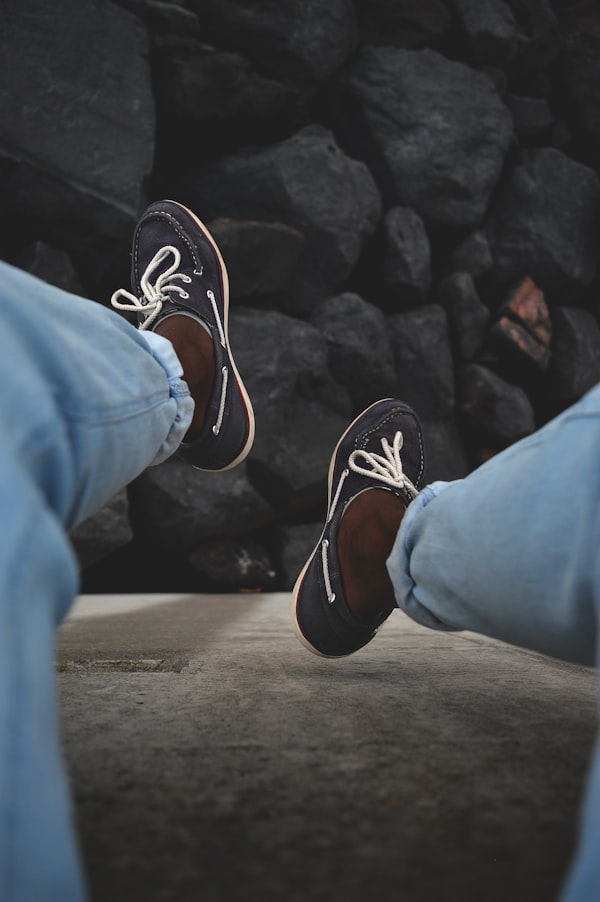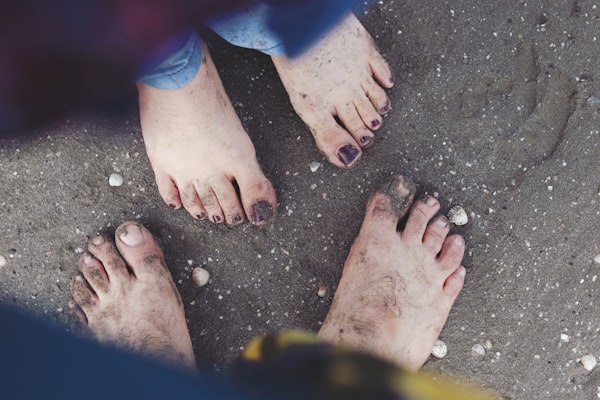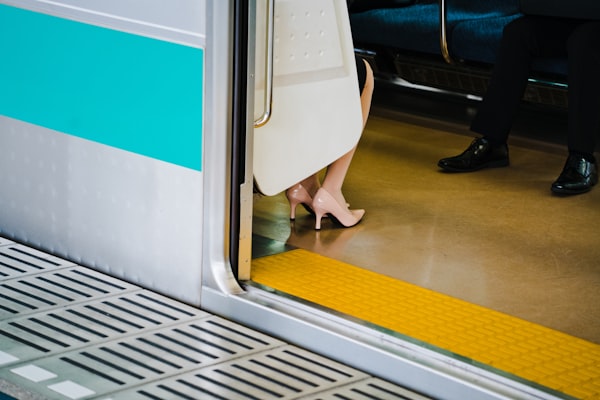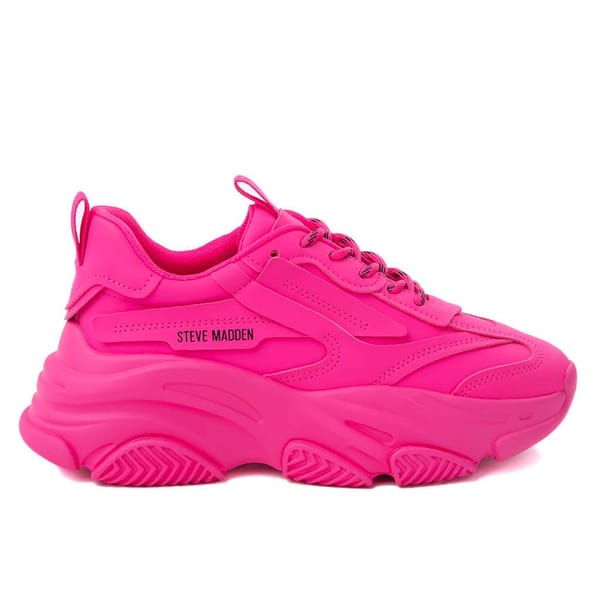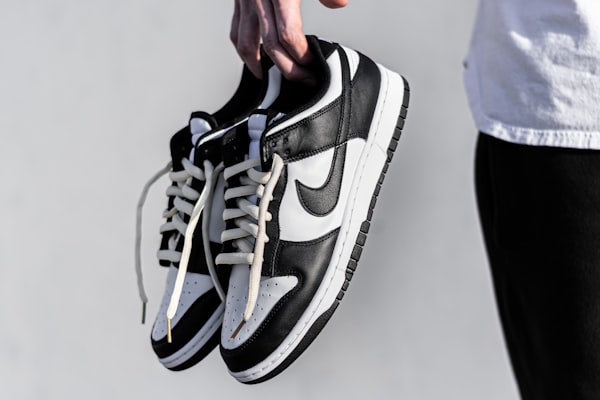Are you suffering from Accessory Navicular Syndrome and struggling to find the right shoes?
The constant pain and discomfort can make even the simplest of tasks unbearable.
Wouldn’t walking, running, and performing daily activities be nice without constant pain and discomfort? The right pair of shoes can make all the difference in managing your symptoms and preventing further injury.
By considering the critical features laid out below, you’ll be able to find the perfect pair of shoes and take control of your symptoms.
What Is Accessory Navicular Syndrome?
Accessory Navicular Syndrome (ANS) is a condition that affects the bones and tendons in the foot. The presence of an extra bone characterizes the condition, called the accessory navicular bone, located on the foot's inner side. The syndrome develops when this bone becomes irritated and inflamed due to overuse, injury, or improper foot mechanics.
Accessory navicular syndrome is grouped into three types depending on the growth's size and location.

Why Is Shoe Choice so Important?
Shoe choice is vital for people with Accessory Navicular Syndrome because the right shoes can help to manage symptoms and prevent further injury.

Appropriately supportive and cushioned shoes can help distribute weight evenly and reduce the stress on the accessory navicular bone, reducing pain and discomfort.
Shoes that are flexible and allow the foot to move naturally can also reduce stress on the bones and tendons in the foot.
Shoes made from breathable materials, such as leather, are more supportive and allow for better airflow, keeping the feet comfortable for a longer period than synthetic materials.
What Are the Features I Should Look for In a Shoe?
When shopping for shoes, trying on several different styles and brands is essential to find the best fit for your feet. If you’re looking for our picks, check out our review of the best shoes for ANS, compiled by type/occasion.


When shopping for shoes on your own, it is vital to consider the following features:
1. Support
Support is a crucial factor to consider when choosing shoes for Accessory Navicular Syndrome because it helps to distribute weight evenly and reduce the stress on the accessory navicular bone.
A sturdy heel is essential because it helps keep the foot stable, which can reduce the pressure on the accessory navicular bone.
Good arch support is also crucial because it helps distribute weight evenly across the foot, reducing stress on the accessory navicular bone and other parts of the foot. When looking for shoes, look for shoes with built-in arch support or removable insole that can be replaced with an orthotic insert. Shoes with a rigid sole can also provide good arch support.
Also, look for a contoured footbed that molds to the foot's shape. It provides cushioning shock absorption and biomechanical support. It allows your foot to spread out and be supported naturally as it moves through a full range of motion.
2. Cushioning
Cushioning is another critical factor to consider when choosing shoes for Accessory Navicular Syndrome because it can help to absorb the shock of impact and reduce pain and discomfort. Impact shock can be especially hard on the accessory navicular bone and surrounding tissues.
When looking for shoes with good cushioning, look for shoes with a cushioned sole and a padded footbed. Cushioned soles can help absorb the impact shock and reduce stress on the accessory navicular bone. Padded footbeds can also help to reduce pressure and provide added support and comfort.
A deep heel cup is essential because it helps keep the heel in a stable position, reducing the pressure on the accessory navicular bone and other parts of the foot. It also aligns the heel with the ankle, knee, and hips, which can help to improve posture and reduce the risk of injury.
It's also beneficial to look for shoes with a multi-layer sole that includes a shock-absorbing layer. This can provide extra cushioning and help to reduce the stress on the accessory navicular bone. Some shoes also have gel or air cushioning, providing extra comfort and reducing impact shock.
It's worth noting that while cushioning is an important factor, too much cushioning can be a problem, especially if the shoe is too soft or spongy. This can cause the foot to sink in too much and change how you walk, putting more pressure on the accessory navicular bone. So, it's essential to find a balance between support and cushioning.
3. Flexibility
Flexibility is another critical factor to consider when choosing shoes for Accessory Navicular Syndrome because shoes that are too stiff or inflexible can put extra strain on the bones and tendons in the foot. This can be especially hard on the accessory navicular bone, which is already under extra stress.
When looking for flexible shoes, look for shoes that allow your foot to move naturally. This means the shoe should be able to bend and flex in the same places as your foot. Shoes that are too stiff or inflexible can cause the foot to move unnaturally, putting extra strain on the bones and tendons in the foot.
Look for shoes that have a flexible sole and a flexible upper. A flexible sole is essential because it allows the foot to move naturally, which can reduce the stress on the accessory navicular bone. A flexible upper is also crucial because it allows the foot to breathe, which can reduce sweating and reduce the risk of fungal and bacterial infections.
4. Closure
The closure is another essential factor to consider when choosing shoes for Accessory Navicular Syndrome because how the shoe closes can affect the level of support and the shoe's fit. Lace-up shoes are recommended for all-day wear because they can be adjusted for a more custom fit. This can help to reduce the stress on the accessory navicular bone and other parts of the foot.
Lace-up shoes allow you to adjust the shoe's fit by tightening or loosening the laces. This can help keep the foot stable and reduce the pressure on the accessory navicular bone. Lace-up shoes can also help distribute the weight evenly across the foot, reducing the risk of injury.
On the other hand, shoes with a slip-on design are not recommended for all-day wear because they may not provide enough support. Slip-on shoes do not have laces and are often made from a stretchy material, making it difficult to get a snug fit. This can cause the foot to move around inside the shoe, which can put extra strain on the bones and tendons in the foot.
When looking for lace-up shoes, look for shoes with laces that are easy to adjust and comfortable. Avoid shoes with laces that are too tight or loose, as this can cause discomfort and pain. Also, look for shoes with a heel loop or tab, making putting the shoe on and taking it off easier.
5. Material
Material is another essential factor to consider when choosing shoes for Accessory Navicular Syndrome because the type of material a shoe is made from can affect the level of support, breathability, and durability.
Leather shoes are a good choice for people with ANS because they provide reasonable support and breathability. Leather shoes are made from natural materials, which are more durable than synthetic materials. Leather shoes are also breathable, which can help to keep your feet cool, comfortable, and dry. This is important because if your feet are too warm or sweaty, it can increase your risk of blisters, fungal infections, and odor.
On the other hand, shoes made from synthetic materials, such as plastic or rubber, may not be as durable or breathable as leather shoes. Synthetic materials are less breathable than natural materials, which can cause your feet to become too warm or sweaty. This can cause discomfort and pain and make maintaining a comfortable and healthy foot environment harder. Additionally, synthetic materials are not as durable as leather and may wear out or break down quicker, so you'll have to replace them more frequently.
When looking for leather shoes, look for shoes made from high-quality leather and well-constructed. Avoid shoes made from cheap or low-quality leather, as these shoes may not provide the level of support and breathability you need.
How Should the Shoe Fit?
When choosing shoes for Accessory Navicular Syndrome, paying close attention to how the shoe fits are essential.
Shoes that are too loose can also cause blisters, calluses, and other foot problems, as well as instability in the ankle and foot which can lead to further injuries or deterioration of the condition.
Shoes that are too tight can cause discomfort, cramping, and poor circulation in the foot, leading to blisters and calluses and exacerbating symptoms of ANS.
Shoes that are just right meet several criteria, which you can check out in the article posted below.

Tips from Our Editors
- Make sure to try on shoes with the same type of socks you will be wearing when you use them, and walk around the store to make sure they feel comfortable and supportive.
- Speaking of socks, moisture-wicking socks assist in keeping your feet cool and dry.
- Be sure to bring your orthotics or inserts when you go shoe shopping if you use them.
- If you have high arches, look for shoes with a deep heel cup, which can help keep your heel stable.
- If you have flat feet, look for shoes with a raised arch and a reinforced heel, which can help to distribute weight evenly.
- Buying shoes in the afternoon or evening when your feet are at their largest is recommended to ensure the best fit.
- Consider water-resistant shoes over fully waterproof shoes. While waterproof materials have improved in recent years, the breathability of these materials has not been scientifically proven.
- If you need high tops for a particular activity, change into a low-top shoe when your activity is over. High tops can restrict the Achilles tendon and cause extra stress on the joint when worn for extended periods.
On a Final Note
Choosing the right shoes for Accessory Navicular Syndrome is essential to managing symptoms and preventing further injury.
No one can enjoy daily activities in constant pain and discomfort.
By following the points we’ve laid out in our guide, you’ll be able to find the perfect pair of shoes and take control of your symptoms. And, if you’re still stumped, check out our review of the best shoes for ANS compiled by type/occasion.



